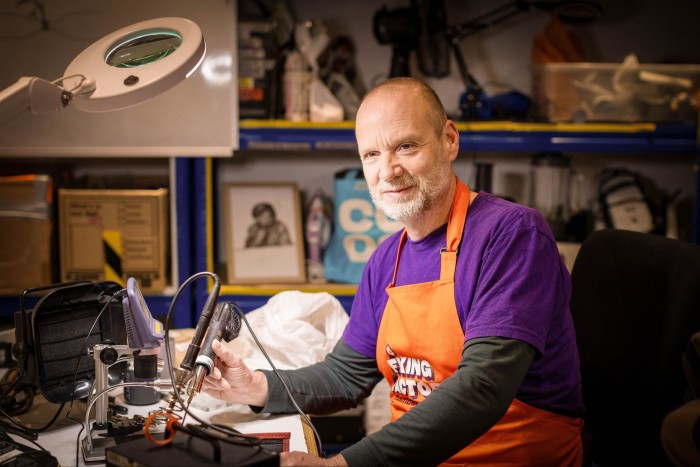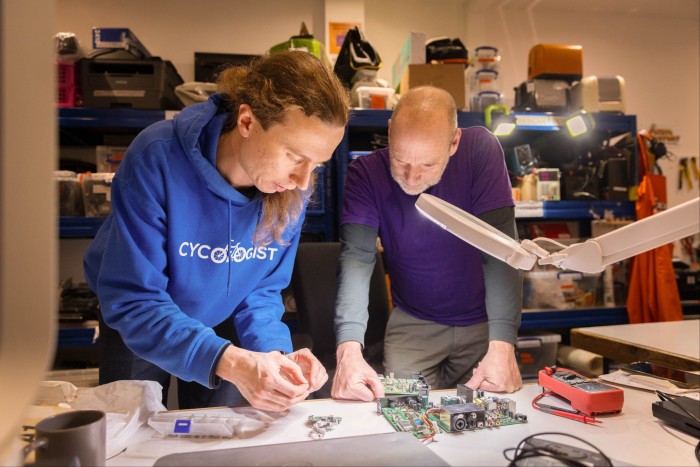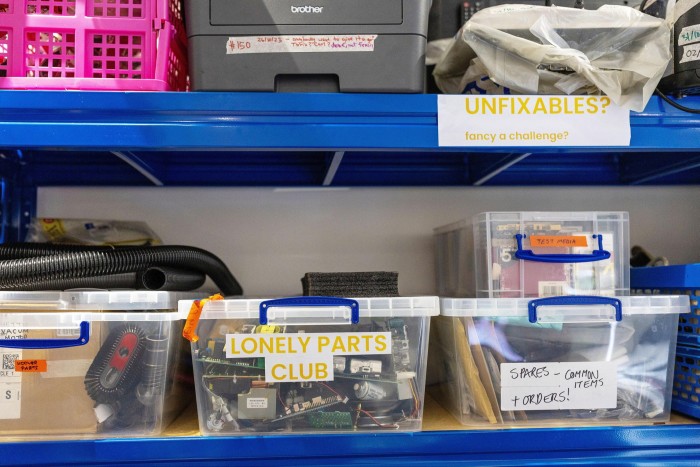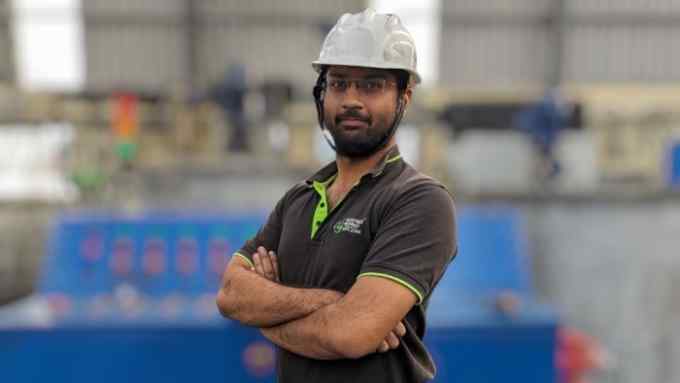Campaigners push to give repair shops new lease of life

Simply sign up to the Sustainability myFT Digest -- delivered directly to your inbox.
“Toasters are our bread and butter,” quips Dermot Jones, project manager at the Fixing Factory in Camden, London. “Oh no — please don’t use that!”
But, given his project’s mission of preserving what is serviceable — albeit, typically, electrical appliances rather than jokes — it seems reasonable to let the statement stand.
The Fixing Factory is part of a network of repair hubs in the UK and Europe attempting to stem the tide of waste created by electronic consumer goods. It aims to encourage people to fix, rather than discard, a range of household devices, and to revive the “make do and mend” mentality that was the norm for earlier generations.
Vacuum cleaners, audio equipment, and coffee-makers are also part of Jones’s “bread and butter”. Helped by volunteers, the denizens of Camden and beyond are encouraged to bring along anything “from hairdryers to air fryers” for a second shot at life.
Campaigners argue that such initiatives are not helped by manufacturers, which, they say, positively discourage consumers from extending the life of electrical goods.
Cristina Ganapini, co-ordinator of the Right to Repair Europe coalition, is campaigning for the EU to toughen regulations and strengthen “right to repair” provisions to force manufacturers to allow easy and affordable repair of goods if faults occur.
Last week, her coalition won a victory, of sorts, when the European parliament overwhelmingly approved stronger rules on design features and contractual arrangements that discourage repair. Lawmakers also approved obligations on fair pricing and accessibility of spare parts.
However, this applies only to 10 product categories. Ganapini complains that manufacturers often seek to deter not only consumers from attempting repairs but also independent repair businesses.
“For tiny spare parts, the prices are absurd,” she says. “Hundreds of product types of electronics are not covered. We need more general legislation to give the right of repair to consumers.”
The coalition’s aim is to “keep things in use for longer, by rescuing and repair” — which, Ganapini says, has a much smaller environmental impact than prematurely discarding goods and then attempting to recycle materials or components. “Very small amounts [of electronic goods] are recycled,” she points out. “It’s a fairytale”.


Pressure for change is being felt at a national level, too. In Germany, for example, the election of a government including the Green party as junior partner, in late 2021, led to funding for initiatives encouraging broader recycling — and raised hopes of stronger “right to repair” regulations.
Yet Katrin Meyer, of the campaign group Runder Tisch Reparatur (Repair Roundtable), says progress has been disappointing.
In October, her group presented a petition demanding federal subsidies to incentivise repairs, and a national strengthening of the right to repair. “The right to repair was in the coalition pact — as part of the drafting of a national circular economy strategy,” she says. “The new government came to power, but we are still waiting for it to act.”
Instead, the federal government has been pushing the “right to repair” in Brussels, at the EU level, says Meyer, while doing little on the ground.
Even so, repair initiatives have been launched more locally, in Germany’s federal states and cities. Thuringia and Saxony have funded schemes offering subsidies to repair household electrical goods that would otherwise end up as junk.
Meyer points to France, where a nationwide fund has been created to help consumers pay for repairs to electrical goods.
She accepts that the high cost of labour deters many consumers from seeking repairs for goods such as washing machines that require time-consuming visits to the home. But she insists that this is not “the real problem”, and that more can be done to improve the economics of repair — such as by preserving the networks of local repair shops that used to dot high streets in Germany, Britain and the rest of Europe.
Repair, when made easy and more affordable, Meyer argues, is a more effective route to a greener economy than conventional recycling. “Bulking up recycling capabilities and improving how products can be recycled is one thing,” she says. “But it is now clear that we need to use products for a longer time. And repair is a very big part of this.”
Strengthening right-to-repair rules in Europe commands broad popular support, adds Ganapini. And it is not just among hobbyists. Europe-wide surveys suggest that “nearly 80 per cent of respondents . . . want the EU to push manufacturers to make domestic appliances more repairable”, she says.
“There is a problem with design,” she adds. “But, wherever you help people get the price to repair a bit lower, people go for it.”
Back in Camden, Jones accepts that, over the years, many have fallen out of the habit of attempting repair, but says the cost of living crisis has forced them to think again. “It’s not just environmental concerns; people can’t afford to buy the stuff,” he says.
Willingness to repair, however, is one thing; actually being able to is another. “Often, things seem designed to be assembled and sold, not to be taken apart and fixed,” observes Jones. Too often, appliances are deliberately made to “keep the customer out”. He says it “feels like spite to have triangular-headed screws” in some goods.
Nevertheless, his project stocks an array of rare components, and idiosyncratic tools, that make supervised repair a possibility. Some reside in the Fixing Factory’s “Lonely Parts Club” box.
With electrical tester in hand, Jones acknowledges that manufacturers have commercial imperatives. He alludes to the 1950s movie The Man in the White Suit, in which Alec Guinness’s titular character invents clothing that resists stain or wear — and is reviled when his employers and colleagues realise it will be disastrous for sales.
But Jones’s more modest ambition is to double the life of the appliances that come into his care, and to avoid premature recycling as far as possible. He argues that “simplicity of design” should be “a key part of the future”, where “people can open it, and go in, and fix” devices.
“The idea is to create a slow-spiral economy,” he says. “The idea is to keep it [the appliance] ‘up in the air’ and use it for longer.”

Comments